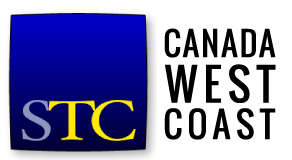Creativity is the ability to imagine new and original ideas. It is the freedom to experiment, innovate, and solve problems, while stretching beyond conventional rules.
How does creativity fit into the seemingly limited scope of technical writing?
I asked myself the same question at the start of my technical writing studies. Since technical writers work with facts, I assumed that the objectivity of their work left no room at all for any kind of creative expression.
But after a few weeks of study, I learned that I did not have the whole picture. It’s true that technical writers transform complex information into clear, concise, and accurate content. It’s also true that their work serves a specific purpose, whether it convinces the audience to adopt an opinion or helps them accomplish a task.
However, a technical writer’s creativity reveals the difference between writing that only serves its purpose and writing that also engages its audience. Creativity is a valuable tool that plays an important role in the technical writing process. For example, the following technical writing activities offer opportunities for creativity:
- Your approach to the work. As a technical writer, your first task is to determine what you are writing and why. What is the purpose of the document? To answer this question, you brainstorm ideas until you define a clear purpose statement. This is your opportunity to think creatively about how all aspects of your work — from the format to the organization to the tone — can help support your goal.
- Understanding the audience. Every audience has its own unique characteristics and needs. For example, general audiences prefer clear and concise writing. A long and complex product manual is not useful to them. Instead, they need a short and simple guide that quickly teaches them how to use the product. Because you do not have every piece of information about your audience, you can use your imagination to fill in the blanks. Your ability to understand the audience is essential in creating relevant work.
- Structuring the content. Technical writers work with a wealth of information, and it is their job to organize that information in a way that is readable for the audience. To accomplish this, you consider the document’s structure, from headings to sections to a glossary, and organization, whether chronologically, by order of importance, or another arrangement. Your stylistic choices help to tell a cohesive story that easily guides readers through even the most complex document.
- Writing and revising. Technical writing requires just as much creativity as any other form of writing. Your writing style, including word choice, sentence structure, and use of literary devices, is completely individual. However, you often have to conform to an employer’s or client’s style requirements as well. The challenge lies in staying true to your own style without compromising the purpose of the work. To maintain this balance, you might rewrite sentences, move entire sections around the document, and add or remove blocks of content. The revision process gives you a chance to think about what changes you can make to improve the quality of the work. You need to experiment to create a clear, correct, and compelling final draft.
